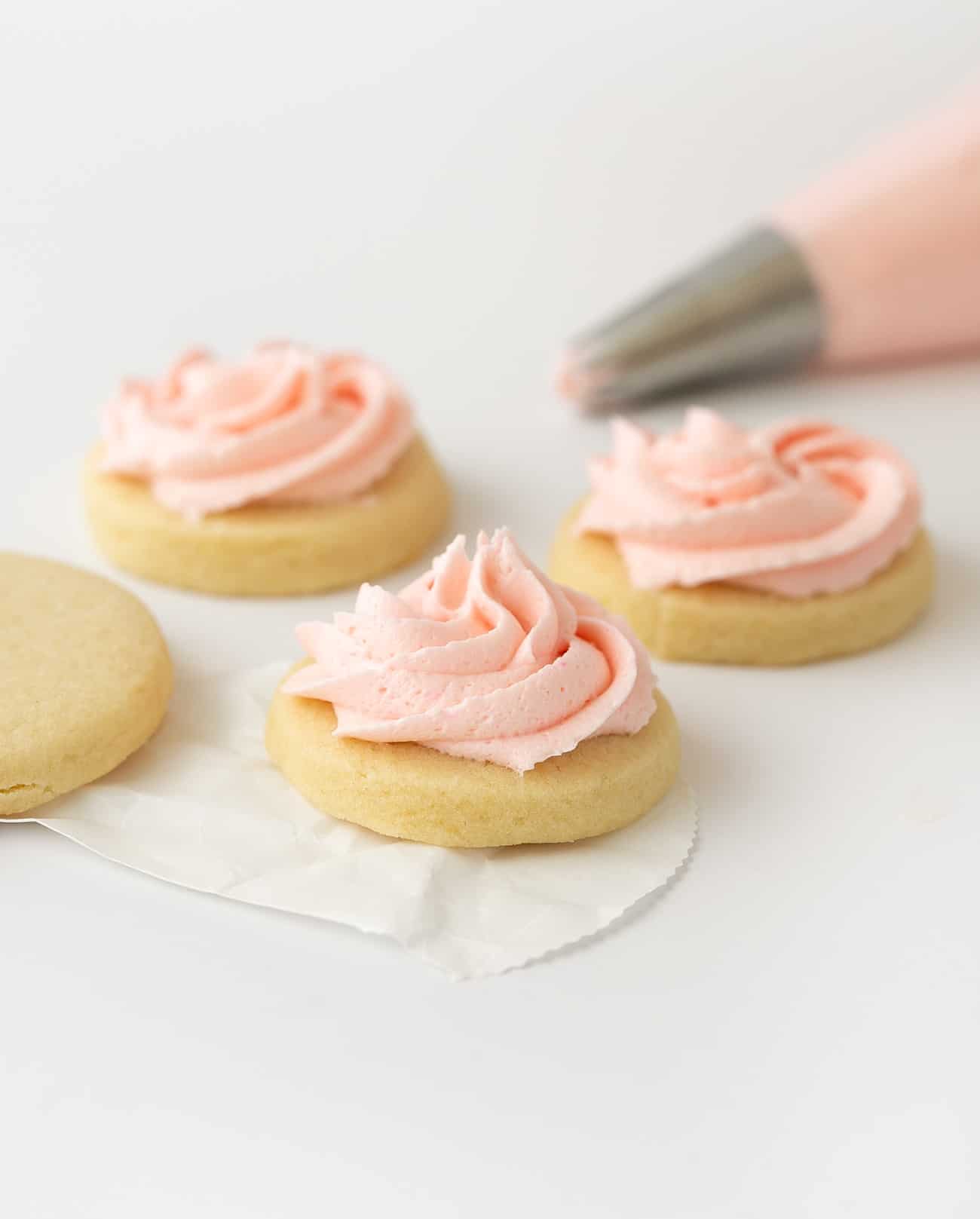
Easy Buttercream Frosting Recipe for Cookies Every Time
Buttercream frosting recipe for cookies is a delightful addition to any baker's repertoire, offering a smooth, sweet finish to enhance the cookie experience.
Equipment
- Electric Mixer (Stand or Handheld)
- Mixing Bowls (various sizes)
- Measuring cups and spoons
- Sifter
- Spatula
- Piping Bags and Tips (Optional)
Ingredients
- 1 cup (2 sticks) unsalted butter, softened
- 3-4 cups powdered sugar, sifted
- 2-4 tablespoons milk or heavy cream
- 1 teaspoon vanilla extract
- Pinch of salt
Instructions
- Step 1: Cream the Butter: In a large bowl, using an electric mixer, beat the softened butter until it is light and fluffy. This step is crucial for incorporating air and creating a smooth base.
- Step 2: Add Powdered Sugar Gradually: Gradually add the sifted powdered sugar, one cup at a time, mixing on low speed to prevent a sugar cloud. Scrape down the sides of the bowl periodically to ensure even incorporation.
- Step 3: Incorporate Liquid and Vanilla: Add the milk or heavy cream, one tablespoon at a time, until the frosting reaches the desired consistency. Stir in the vanilla extract and salt. Mix until well combined and smooth. Add more powdered sugar for a thicker frosting or more milk for a thinner frosting.
- Step 4: Adjust and Frost: Taste the frosting and adjust the sweetness or flavor as needed. Use immediately to frost cooled cookies. Optional Tips: For a richer flavor, use salted butter. If the frosting is too thick, add more milk, one teaspoon at a time. If it's too thin, add more powdered sugar, one tablespoon at a time. Food coloring can be added for festive occasions.
Notes
Variations
Buttercream frosting lends itself well to numerous adaptations to cater to diverse tastes and dietary needs.
- Ingredient Swaps: Unsalted butter can be replaced with vegan butter alternatives for a dairy-free option. Milk or heavy cream can be substituted with almond milk, soy milk, or coconut cream to accommodate lactose intolerance or vegan preferences. For a richer flavor, brown butter can be used as a base.
- Regional Twists: Incorporating local flavors, such as maple syrup in New England or lavender extract in Provence-inspired recipes, can create regional variations. Adding a touch of cinnamon and nutmeg lends a warm, autumnal note.
- Dietary Adjustments: To reduce sugar content, consider using sugar substitutes like erythritol or stevia, adjusting quantities as needed. For a gluten-free option, ensure that all powdered sugar used is certified gluten-free.
Serving Suggestions
Buttercream-frosted cookies are versatile treats suitable for various occasions. They are ideal for holiday gatherings, birthday parties, bake sales, and afternoon tea. Serve frosted cookies as part of a dessert platter, alongside other baked goods, or package them individually as edible gifts. Enhance the presentation by arranging cookies artfully on a tiered stand or decorative plate. Pair the cookies with a glass of milk, coffee, or tea to complement the flavors.
Storage Tips
To preserve freshness, unfrosted cookies should be stored in an airtight container at room temperature for up to 5 days. Buttercream-frosted cookies are best stored in a single layer in an airtight container in the refrigerator for up to 3 days. Allow cookies to come to room temperature before serving to soften the frosting. Freezing is not recommended as it can alter the texture of the buttercream.
Frequently Asked Questions
- Question 1: Can I use salted butter instead of unsalted butter?